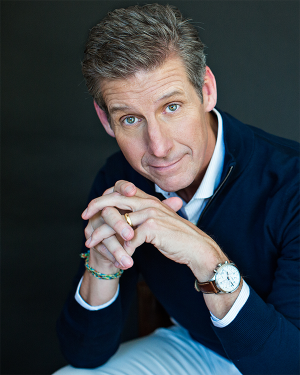Fewer Powerpoints, more napkins
TEXT OF INTERVIEW
Kai Ryssdal:
There’s a conference room here that I have to pass to get to the studios and a lot of the time when I walk by, there’s a PowerPoint presentation of some kind going on.
We’ve all been there. The person doing the presenting puts the slide up there and then proceeds to read it out loud.
In his new book, “Back of the Napkin,” author and consultant Dan Roam says if we want better presentations — and better ideas — the first thing we ought to do is get rid of all those PowerPoints.
Ryssdal: Dan, good to have you with us.
Dan Roam: Pleasure to be here, Kai.
Ryssdal: Napkins or PowerPoint: what’s the difference?
Roam: Oh my goodness, well napkins are a much more spontaneous way to be able to present ideas and if you think about this, why are napkins interesting? Because when you take a napkin and you just start drawing on it and start imagining what an idea that’s in your own mind looks like, all of the sudden, you’re opening up all kinds of channels in your own mind that, if you’re just working on a computer screen or just working with the shapes that are available, say, in PowerPoint, do not happen. In fact, I don’t want to go too much on a mantra about this, but I’ve gotten to a point where I kind of think the first thing we should do when it comes to problem solving — don’t tell my client at Microsoft this — but throw away all the computers. Seriously, nothing beats just putting a pen on paper.
Ryssdal: Yeah, but how about this: I’m, let’s say, a client of yours and I’m paying you rich consulting contracts like you consultants get and you walk into a meeting with a piece of napkin. What am I going to think, right?
Roam: Yeah, well, fantastic things are going to happen, but that’s because I know what I’m doing. I have done enough napkin sketching to where… and this is what the book is really about, a set of very basic tools and rules that anybody can use, regardless of artistic talent or artistic training, to begin to think about ideas in new ways simply by creating them on paper live.
Ryssdal: Well, let me put you on the spot a little bit…
Roam: Uh oh.
Ryssdal: …and obviously have you draw something on a napkin, right, because this is just begging for one of those conversations. What I was going to do was have you give your book pitch on a napkin, but I figured that was too easy because you’ve done it a million times and obviously it was successful, because we’re sitting here talking about your book. Let me throw another one at you here as we wrap things up. Are you a public radio listener?
Roam: I am.
Ryssdal: OK. Get another piece of paper and imagine you represent Marketplace in the sales world…
Roam: OK.
Ryssdal: …and it’s your job to get this program onto public radio stations. You have to go and convince the program director there that Marketplace is a program they ought to carry.
Roam: OK.
Ryssdal: Ready… go.
Roam: Alright. I’m Marketplace. I’m over here. I’d say… here’s the program director at station X who’s not convinced that I have anything to sell them. What’d I’d bring along is I would say: Let’s make a map of the United States. Let’s make a map of where the money is. The money’s here, it’s here, it’s here, it’s here, it’s here. It’s in all the major metropolitan areas.
Ryssdal: Coasts and Chicago, he says on the map.
Roam: Exactly. The point is, the people who have the money, who are good radio listeners, probably people driving their cars, are located in these areas and the people that listen to Marketplace are number one, the people that have the money, the people that drive to work and the people that listen to the radio. They’re also, because they’re the people who have the money, they’re the people who buy products. So if, in your market, you want to be able to reach the audiences that have the money and have the time to listen to the radio and are intelligent decision makers about what they buy, you want to carry Marketplace.
Ryssdal: Boom. Done. I’d say you’re hired.
Roam: OK, great.
Ryssdal: Dan Roam. The book is called “The Back of the Napkin: Solving Problems and Selling Ideas” — and radio programs too — “with Pictures.” Dan, thanks a lot for coming in.
Roam: Kai, my pleasure. Thank you.
There’s a lot happening in the world. Through it all, Marketplace is here for you.
You rely on Marketplace to break down the world’s events and tell you how it affects you in a fact-based, approachable way. We rely on your financial support to keep making that possible.
Your donation today powers the independent journalism that you rely on. For just $5/month, you can help sustain Marketplace so we can keep reporting on the things that matter to you.


















